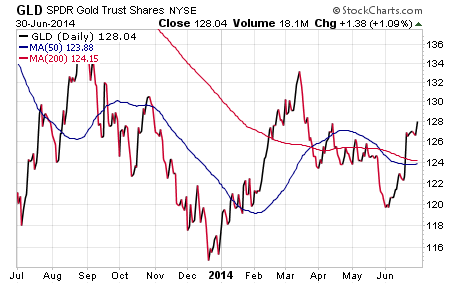Emerging Market ETFs Showing Excellent Strength FMD Capital Management
Post on: 2 Август, 2015 No Comment

Written by David Fabian, July 09th, 2014
Emerging market ETFs have been one area of the market that I have been admittedly cautious about adding to. Over the last several years they have consistently underperformed their U.S. and European counterparts as investors have adopted a home-country bias to their portfolios.
This is understandable considering the consistent string of positive economic statistics that have helped push the domestic markets to new all-time highs. While at the same time, global conflicts, currency issues, and fiscal instability have capped the upside of emerging market countries since 2011. Pockets of strength were readily apparent in limited areas such as India and Taiwan; but as a whole, this group has been mired in a fog of disenchantment with the global investment community.
My initial foray into emerging markets started early this year with a position in the iShares J.P. Morgan USD Emerging Markets Bond ETF (EMB). This ETF has over $5 billion committed to mostly sovereign debt of emerging market countries such as Brazil, Turkey, Russia, and Mexico. In the wake of the 2013 interest rate scare, EMB fell over 14% from its high and began to regain stability in the fourth quarter.
The attractive quality of emerging market bonds became apparent when comparing the credit characteristics and relative valuation to domestic high yield fixed-income of similar duration. Since EMB crossed back above its 200-day moving average at the beginning of 2014, investors have continued to increase their exposure to this undervalued asset class. According to recent data. EMB has gained more than $1.4 billion in new assets and achieved a total return of 9.12% this year.
Emerging market bonds have been one of the best performers in 2014 when compared to other fixed-income sectors such as treasuries, high yield, investment grade, mortgage, and municipal bonds. EMB has also continued to be extremely resilient in the face of some mild volatility in interest rates. Despite its run back to the highs, EMB is still sporting a strong 30-day SEC yield of 4.26% and dividends are paid monthly to shareholders.
While initially less enthusiastic about getting whipsawed from emerging market equities, I have been impressed with the relative strength in the iShares MSCI Emerging Markets ETF (EEM) and Vanguard Emerging Market ETF (VWO) over the last five months as well. Since hitting a low in February, VWO has gained 18% and significantly bested the 11.15% return of the SPDR S&P 500 ETF (SPY).
The important breakout for VWO and EEM was to push back above the 2013 high and continue to make positive headway this year. More recently, these ETFs have held up better than other momentum areas such as social media, biotechnology, and solar stocks all of which have experienced another round of selling pressure. Furthermore, this same trend and strength has also been confirmed in smaller regional companies according to the SPDR S&P Emerging Market Small Cap ETF (EWX).
That speaks volumes about the resilience of emerging market stocks at this juncture and the demand for undervalued global opportunities when compared to high priced domestic equities. In addition, we have yet to see a convincing return of asset flows to this space, which is a positive indicator of the potential upside for a reflation trade in emerging market countries.
VWO is still on in the top 10 list of ETF outflows for 2014 with $2 billion in redemptions, but the majority of that damage was done in the first quarter of the year. Since March, this ETF has seen steady inflows that suggest the tide may have turned.
I currently own VWO for my growth portfolio because of its much lower expense ratio and its outperformance over EEM so far this year. VWO only charges an annual fee of 0.15% versus 0.67% for EEM. That translates to a pickup of 52 basis points in total return, with all other factors being equal.
While the current valuations in both stocks and bonds are not nearly as attractive as they were six months ago, I will continue to hold emerging market positions for clients as long as they exhibit positive price momentum. My risk management strategy is defined by a stop loss to guard against a reversal in both these asset classes as a function of trading discipline. In addition, I am leaving open the door to add to these holdings over time if they continue to demonstrate alpha over other global investment themes.














